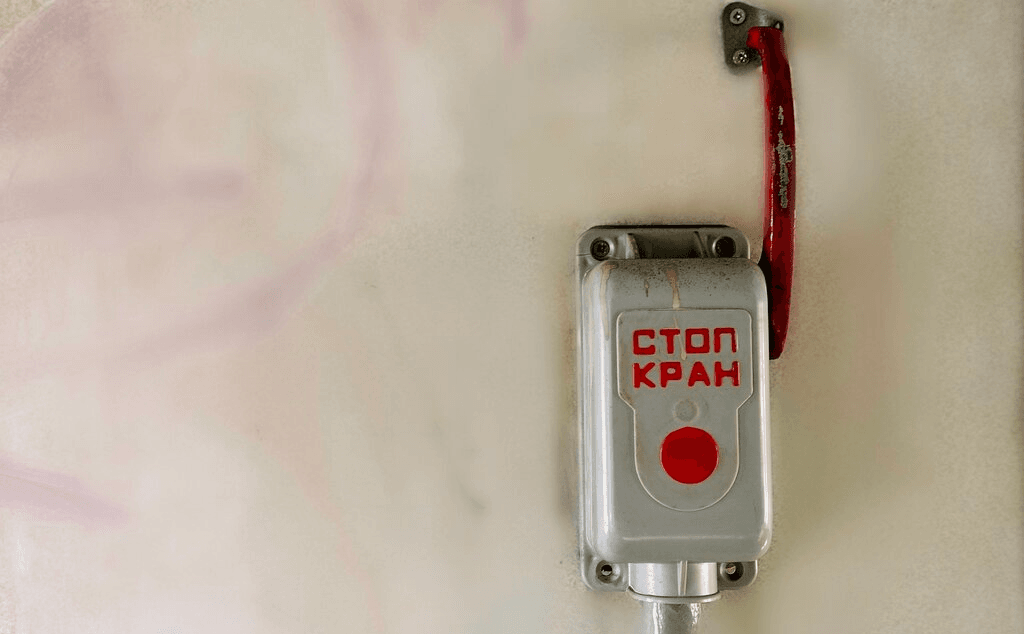There are rumors that stop valves are found not only on trains, but also on airplanes. We checked if this is true.
There is a well-known riddle with a trick: what color is the stop valve on an airplane? Evgeny Sidorenko in his book “Logic. Paradoxes. Possible Worlds: Reflections on Thinking in Nine Essays" writes: “It’s paradoxical, but to the question: “What color is the stop valve on an airplane?” Most of those asked, after thinking, almost always give an answer. Some say it's blue, others say it's red, and others admit they don't know. When they later realize the absurdity of the question, they laugh in surprise and without offense. This is a typical example of a question in which the person being asked is somehow distracted from the absurdity of this very question.”
But is he really that ridiculous? Of course, the idea that passengers could stop the engine in mid-air by pulling a lever seems crazy. However, it is important to know not only the word “stop tap”, but also the concept that is hidden behind it. As they write, in particular, “Arguments and facts“, on aircraft there is still a stop valve, but it’s useless to look for it in the passenger cabin. The stop valve is located on the instrument panel in the cockpit, where access to passengers is prohibited. And its function on an airplane is not at all emergency braking, like the brake valves on trains. On board an aircraft, this device serves to open and close the fuel supply to the engines. The stop valve is moved to one position before starting the engines to allow fuel to flow, and to the opposite position at the end of the flight, when the fuel needs to be turned off.
However, there is a nuance. The same “Arguments and Facts”, citing the words of an experienced pilot, note that this device cannot be called a stop valve. According to the pilot, its correct name is fuel tap, but the popular nickname is not used by the pilots themselves and is even technically incorrect. Firstly, this professional opinion contradicts the large number of photographs found on the Internet. On them, the inscription “stop tap” is clearly visible on the lever (sometimes on the toggle switch) or near it:

Despite the antique appearance of the presented instrument panels, among them there are also those belonging to quite modern aircraft. For example, in the upper left corner there is a fragment of the instrument panel of the An-124 Ruslan aircraft, one of the largest aircraft in our time. So, at least at the level of onboard terminology, such naming is correct.
Well, the relevant literature will help us find out the official (technical) name of the device. In the 2015 training manual "Aircraft and helicopter avionics systems"The term “shut-off valve” is used in the GOST current in Russia "Aircraft and helicopter fuel systems" - "fuel shut-off valve" (in English - shutoff valve). But in An-24 flight manual This is specifically about the stop tap (as well as the stop tap switch). As for helicopters, Mi-8 documentation this device is called a stop valve. As you can see, in all cases the terminology is different, but it should be noted that there are no taps directly on the instrument panel of the aircraft - levers (toggle switches, switches, switches) are located there, and the taps themselves are located much deeper, inside the fuel system.
So, we are convinced that the term “stop valve”, although not in GOST, is found on dashboards and in aircraft operating manuals. Therefore, it is quite correct to use it, especially in everyday life. As for the color of the stopcock, as can be seen in the photographs, it can be almost anything.
Is it true
Read on topic:
1. GOST "Aircraft and helicopter fuel systems", 2014.
2. "Aircraft and helicopter avionics systems. Fuel system and cabin equipment" Komsomolsk-on-Amur, 2015.
3. Why do airplanes need a stop valve?
If you find a spelling or grammatical error, please let us know by highlighting the error text and clicking Ctrl+Enter.







